Agarwal Wedding Traditions
A Hindu Wedding Ceremony has slight variations based on which community or region in India your family belongs to. This week we will focus on the Agarwal Wedding Traditions. Today’s post is on Pre-wedding Agarwal Ceremonies.
Agarwals are one of the most enterprising and influential communities hailing from Northern States of India. Agrawals or Agarwals (also known as Baniyas) have significant presence in business, government and private service, agriculture, education and politics. Some of the common Agarwal Last Names are Gupta, Jindal, Mittal etc.
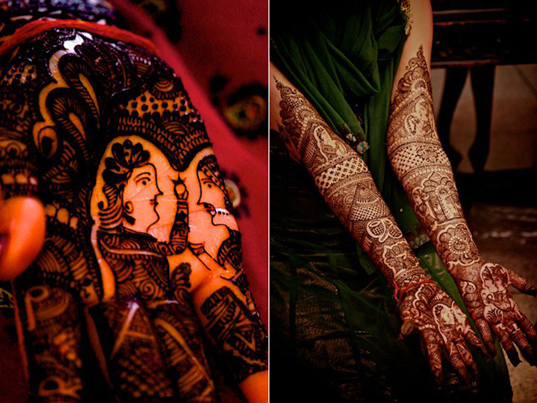
Mehendi
The Formal Engagement or Rokna
The tradition of a Rokna Ceremony is to symbolize coming together of the two families of the couple. Rokna literally meaning to stop in Hindi. It symbolizes that the search of the families or the individuals for their soulmate has stopped.
During the actual ceremony, the bride-to-be’s father or an older male member of the family puts a tilak on the groom’s forehead. This is a gesture to accept and welcome the groom into the family. The groom is given some gifts and fed with laddoo, which is the favorite dessert of Lord Ganesha. Following this, the groom-to-be’s family presents the bride-to-be with gifts.
Teeka
The Teeka ceremony takes place on an auspicious day around the time of the wedding cerebration. It begins with a small puja being performed by the bride’s father and the groom. After that all the male members of the bride’s family do a tilak or a teeka on the groom’s forehead. It is a gesture to show their love, and respect towards the groom. The groom is given some gifts and is fed mithai. Members of the groom’s families may be presented with gifts, fruits and mithai.
Godh Bharai
Following the teeka ceremony, the bride is escorted by her entourage consisting of siblings, cousins and friends to the function where her godh ceremony will be held. The groom’s family brings gifts, jewellery, doll, shringar or make up, clothes and mithai for the bride in beautifully decorated trays and baskets. These gift items are placed in the bride’s jholi or lap. The doll bears a special significance as they are presented to the bride with a wish that she may bear many children in the future. All of the gifts are signs of marital bliss and are considered shubh.
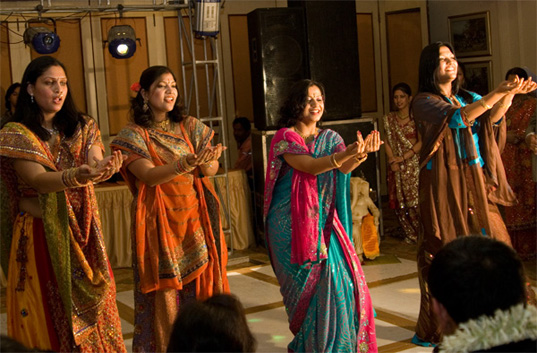
Sangeet
Sangeet
Traditionally an Agarwal Sangeet involved ladies of the families getting together and singing wedding songs to bless the bride. Today, the modern Sangeet is a spectacular event consisting of performances by family and friends, most of the time organized in the form of a skit. The skit tells the story of the bride and the groom in interesting commentary, music and dance. Later in the evening, the dance floor is opened up to all the guests to celebrate.
Mehendi
The mehendi or henna ceremony typically takes place at the Bride-to-be’s parents residence, a day or two before the actual wedding. Amidst family, friends, music, singing, and dancing, mehendi is applied on bride’s hands and feet. Usually Agarwal families hire a traditional signers and dholak artist to entertain the guests, and number of professional henna artists to apply mehendi to all the ladies in attendance.
Laghana Lekhan
In Laghana Lekhan, a small puja is held in the prospective bride’s house. Close relatives and friends are invited to attend the puja. It is during this puja that an auspicious time for the rituals of the marriage also known as lagna or mahurat is determined. In the end, the formal wedding invitation and lagan patrika or letter indicating the wedding time is hand delivered to the groom’s family to formally invite them to the wedding.
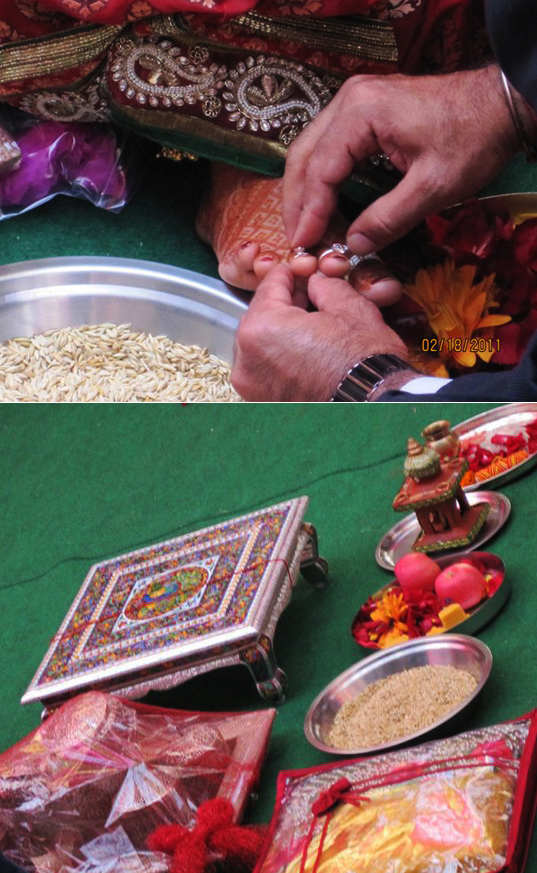
Agarwal Bhaat Ceremony
Bhaat
Bhaat is a very important Agarwal wedding tradition. The Mama or the maternal uncles of the bride plays an important role in the wedding. The custom is, for the Mama to bestow lavish gifts on the bride. A couple of days prior to the wedding, the mother of the bride goes to her brother’s house to invite him for Bhaat, which is a simple North Indian meal consisting of rice and lentils with sugar, and gives him a formal invitation to the wedding.
Upon receiving the invitation, the mama or bride’s maternal uncle brings gifts for her and her entire family. They are all welcomed inside the home with a teeka on their forehead by the bride’s mother. During this ritual, the bride is seated on a beautiful chauki (a short stool with four legs). She is then presented with all sorts of gifts, like clothes, and jewelry. She is adorned with the earrings, necklace, nose ring, bangles, anklets, and toe rings given to her by her mama and mami.
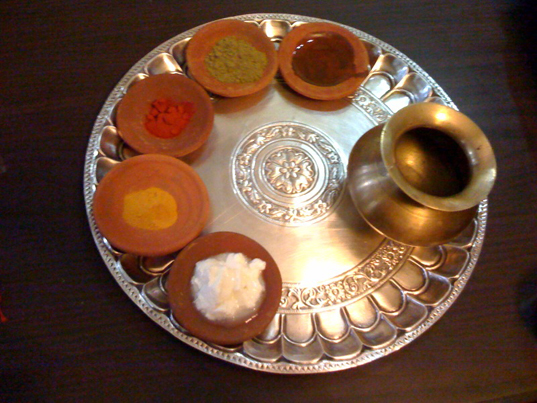
Tel Baan Plate
Tel Baan and Haldi
In the Tel Baan ceremony, the ladies on both sides ‘prepare’ the bride and groom (in each respective home) for the forthcoming wedding. This ritual usually happens on the day of the wedding, and in more traditional families, happens for a couple of days around the wedding time.
At this ceremony, a paste made from herbs, mustard oil, fresh milk curds, henna and turmeric on the faces, arms and feet of the bride and the groom. All the ingredients for Tel Baan are separately put in bowls made of clay, put together in a plate. The ingredients are applied by the means of brushes made of grass. Family members take these grass brushes and dip them in the ingredients and apply it symbolically to their feet, knees, hands, shoulders and head seven times from bottom to top and then top to bottom. This is accompanied by some singing of folk songs.
On the day of the wedding, in addition to the tel baan, the haldi ceremony is also held where ubatan or a paste made primarily of haldi or turmeric is rubbed on the bride. The thought is that haldi makes the bride glow. During the ceremony, the bride also gives a portion of the paste to her cousins and friends of marriageable age. After the ritual bath, the bride is dressed up with shringar and aarti is performed for her.
Kangana
On the day of the wedding, the bride and the groom, are also tied the kangana or sacred thread on their right wrists. The kangana is a red thread strung through iron chaaku (small iron knife for protection), turmeric sticks, supari (betel nut) and kaudis (shells). These are all symbols of good luck and to protect the bride and the groom from the evil eye or nazar.
Ganesha Puja
This puja marks the beginning of all wedding festivities and hence, starts with a Ganesha puja, which is performed by a pujari or priest. The significance of this puja is to ward off any evil and negate the effects of any deaths in the family, so that the marriage may take place without any obstacles.
Gaur Puja
In Gaur Puja, the bride is worshipped as Goddess Gauri or Parvati (consort of Lord Shiva), who is considered the perfect wife. As an Aryan princess marrying a non-Aryan, Lord Shiva, she merged herself completely with an alien culture and the unfamiliar lifestyle of her husband’s family. They bless her with a long and a happy married life, like that of Parvati and shower her with gifts. For the Gaur Puja, all of the bride’s family and extended family, form a circle around her. She hands husked rice or jaw to all of them turn by turn. After that they all walk around her, circling her seven times. While they do that, they offer the husked rice to her, to bring her happiness. Rice is a symbol of prosperity and fertility in Indian culture. At the end of the seven circles, everyone going around her offers her a present in her lap. In the end, the bride’s mama picks her up in his arms while she is still holding on to the pile of gifts, and places the bride in her mother’s lap.
Tomorrow we will be posting about the Agarwal Wedding Day Traditions. Stay tuned for more.
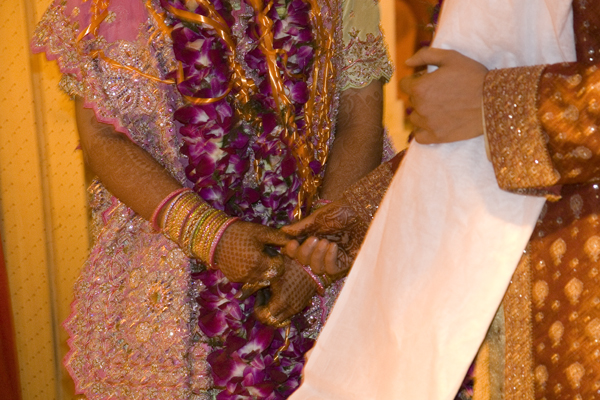 Agarwal Wedding Ceremony
Agarwal Wedding Ceremony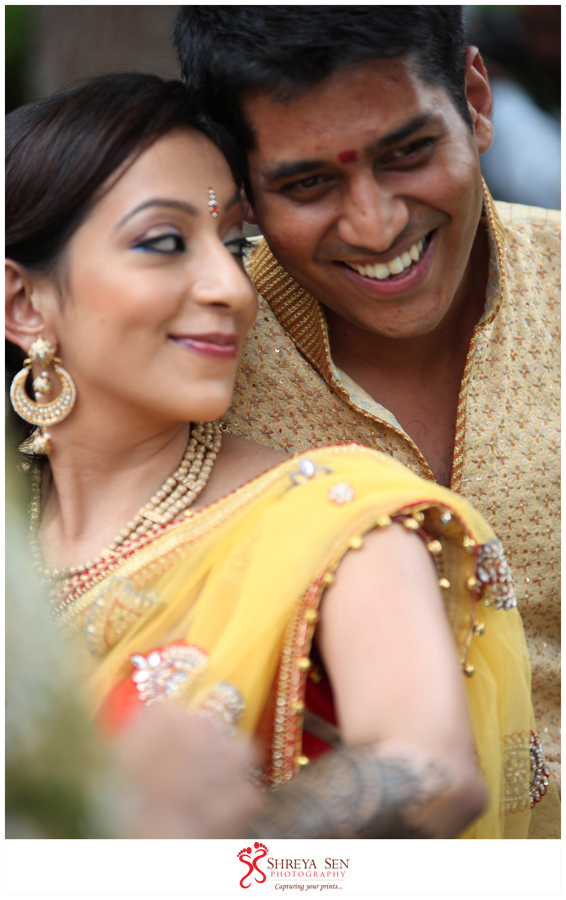 Radhika and Vikas: Featured Wedding – Part 1
Radhika and Vikas: Featured Wedding – Part 1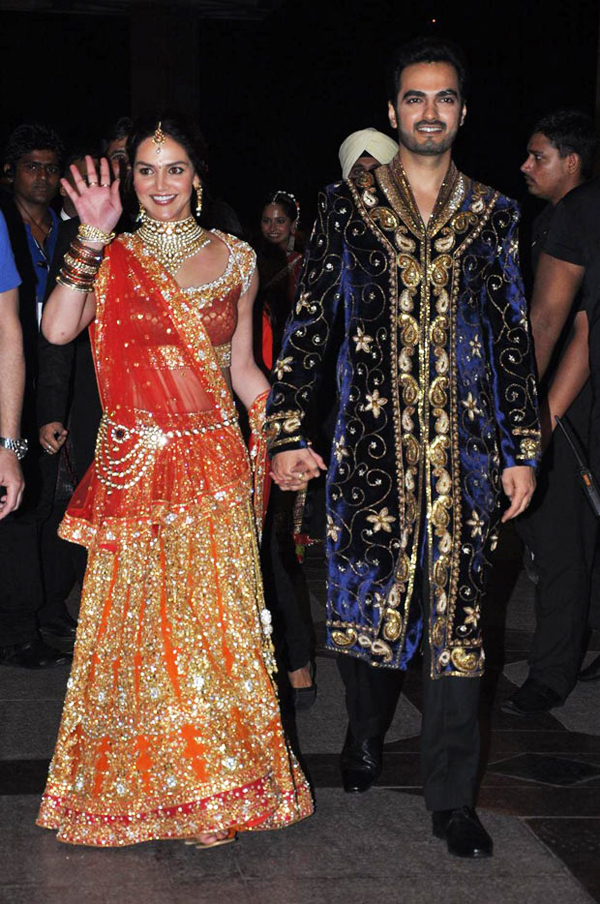 Featured Celebrity Wedding: Esha Deol and Bharat Takhtani
Featured Celebrity Wedding: Esha Deol and Bharat Takhtani
Anonymous says
Whose house is this done at? Grooms side or brides?